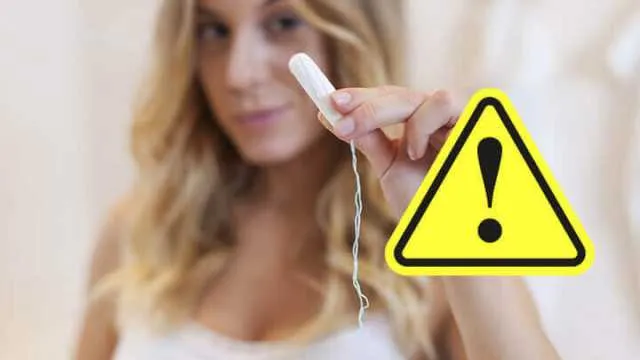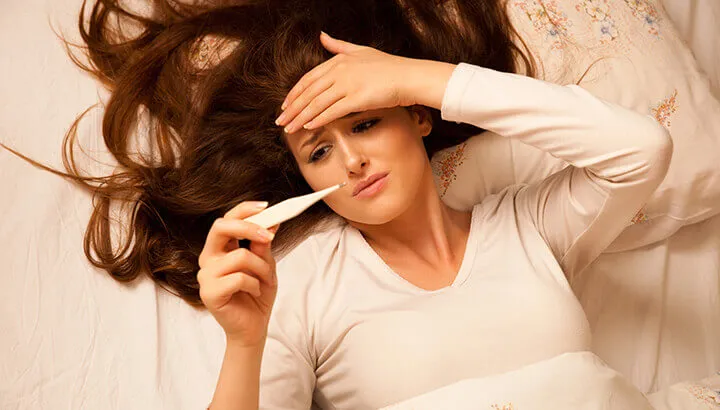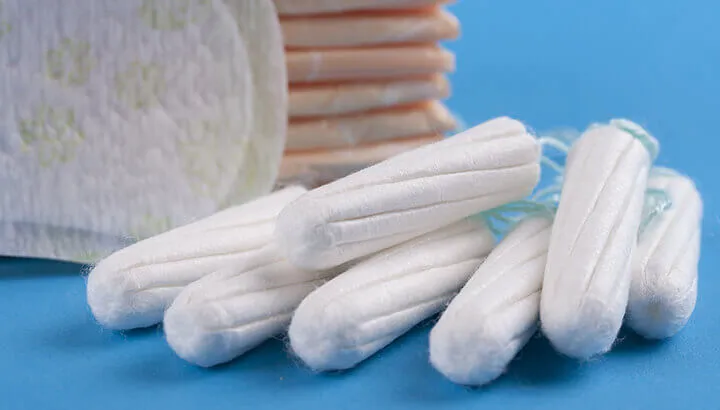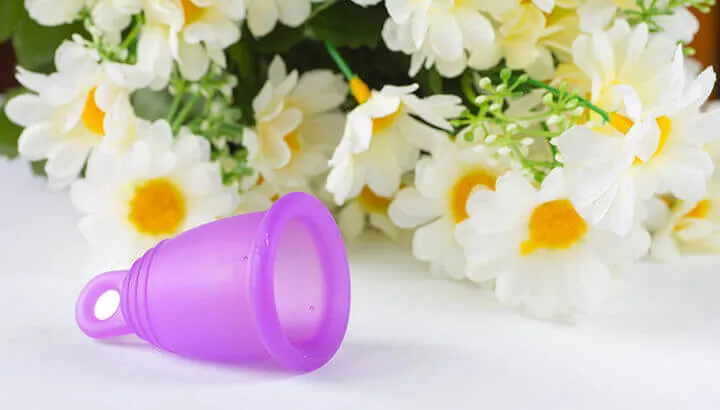
- Share on Facebook80
- Share on Pinterest
- Share on Twitter
As young women, we are taught to use tampons (or pads) as our only methods for managing our menstrual cycles each month. For years, and even decades, we continue down that road without much thought to what we’re actually putting into our bodies. Understandably, they’re convenient, relatively easy to use and disposable. But, is sacrificing your health really worth a disposable convenience?
Tampons and the link to toxic shock syndrome
Toxic shock syndrome (TSS) first made headlines in 1980 when unexplained illness associated with shock, multiorgan dysfunction and high death rates among young women of childbearing age were reported to the Center for Disease Control and Prevention (CDC). Healthy young women throughout the U.S. were experiencing high fever, vomiting and watery diarrhea, sometimes accompanied by a sore throat, headache and myalgias.
Research by the CDC suggests that 74 percent of all TSS cases reported in the U.S. between 1979 to 1996 were the direct result of menstrual TSS. Menstrual TSS has declined over recent years — likely due to educational information in tampon package inserts. However, 40 percent of menstrual TSS cases continues to affect women 13 to 19 years of age. This age group may be less aware of toxic shock and its association with tampon use.
Over the last few years, two changes have transpired regarding tampons and how they’re made.
1. All-cotton tampons hit the market as an alternative product, making them appear safer for use — but they’re not. In-vitro studies have not found any differences in the effects of these new tampons on the production of toxic shock syndrome.
2. Tampons specifically marketed for overnight use have also been introduced. These present an even greater risk for TSS.
Previous case-control studies by the CDC found that exclusive tampon use was associated with a higher risk for TSS, rather than when used in combination with pads.
Symptoms of toxic shock syndrome

Toxic shock syndrome is a rare but serious medical condition, caused by the bacterium Staphylococcus entering your bloodstream. And, it’s clearly linked to superabsorbent tampon use. Often, the diagnosis is missed since symptoms can be nonspecific, according to research published in the Journal of Medical Case Reports. However, progression is rapid. And, unless treatment is introduced early on, the result can be catastrophic. It may include amputation, organ failure and even death.
While symptoms of toxic shock can vary from person to person, in most cases they appear suddenly. These symptoms include:
- Fever
- Headache
- Low blood pressure
- Muscle stiffness
- Confusion
- Diarrhea, nausea and/or vomiting
- Rash, redness of eyes, mouth and throat
- Seizures
So, why do tampons sometimes lead to TSS? The exact connection is not known. One theory suggests that a tampon left in place for too long attracts bacteria. Another possible theory is that tampon fibers scratch the vagina, thus creating an opening for bacteria to enter the bloodstream.
What’s in a tampon?
Approximately 43 million women in the U.S. use tampons. This billion-dollar business is the result of women using tampons monthly. Women purchase more than 11,000 tampons in their lifetime, according to the National Center for Health Research.
One concerning source of toxin found in tampons — rarely mentioned — is dioxin. Dioxin is the byproduct of converting wood pulp into the synthetic fiber rayon. Tampons are typically made with cotton and rayon. Up until the late 1990s, bleaching the wood pulp resulted in traces of dioxin in tampons. However, that method was replaced with a chlorine-free bleaching process.
The Environmental Protection Agency (EPA) reports that dioxins are highly toxic and can cause cancer. In addition, they cause reproductive and developmental problems, damage to the immune system and can interfere with hormones. The EPA has determined that those exposed to high levels of dioxins may be at risk for a damaged immune system, increased risk of pelvic inflammatory disease and reduced fertility.
Although toxins are reduced because of new bleaching methods, it’s still detected in tampons — even those made of 100 percent cotton. The EPA states that dioxin can be found in the air, water and ground due to decades of pollution. Therefore, small amounts of dioxin may be present in the cotton or wood pulp used to make tampons. Yet, the U.S. Food and Drug Administration (FDA) says that tampons are safe, since “dioxin levels are at or below the detectable limit.” But, even in trace amounts, dioxins are worrisome. Is this something you really want to put into your body?
More about cotton tampons

The Pesticide Action Network reports that cotton growers use some of the most hazardous pesticides available. Cotton farming is responsible for 16 percent of all global insecticides. For every hectare of cotton grown, a kilogram of harmful pesticides is sprayed.
Aldicarb, a multi-use pesticide used to control agriculturally-harmful insects, is one of the most acutely toxic pesticides registered in the U.S., according to Toxipedia. In fact, it’s so dangerous that even a single drop, absorbed through the skin, can kill an adult. And, almost one million kilos are used each year.
But, are tampons made with organic cotton any better? Yes and no. They’re certainly a better option than pesticide and chemical-laden tampons. However, since science cannot determine the exact cause of toxic shock syndrome — tears in the vagina from fibers or keeping them in too long — then I’ll also have to place a big fat “X” on organic tampons. So, what’s a health-conscious girl to do?
Healthier alternatives to tampons
Beyond chemicals, pesticides and the potentially deadly bacteria associated with tampons, you’ll also find fragrance. And fragrance, like any cosmetics, often contain dozens of irritating chemicals that could possibly cause rashes and, worse, harm your body. But, there are healthier alternatives for managing your monthly cycle. They are better for the environment and also safer for you. These include:
Organic pads
If you want to stick with the convenience of traditional pads, then at least switch to organic ones. Although more taxing to the environment, they are relatively pain-free and widely available. And they’re generally the same cost as non-organic pads.
Reusable pads
This may have a bit of an “ick factor” for some women. But, truthfully, organic reusable cloth pads have been around for centuries. Today, they even come in beautiful designs. Undoubtedly, they’re a bit of a hassle to wash-up, but if your environmentally conscious, they may be a good option for you.
Menstrual cups

Menstrual cups are a good replacement for tampons since they catch menstrual blood flow rather than absorb it. They’re soft, flexible and easy to insert. When full, you simply dump, rinse and re-insert.
Period panties
These, look and feel like regular panties. Yet, they will free you from using tampons or pads. Some brands even boast that they absorb up to two tampons’ worth of blood. They’re completely absorbent, protect you from leaks and they can be worn all day.
Ultimately, only you can decide what you will or won’t put into your vagina. But remember this: your vagina is highly-absorbent and capable of absorbing fluids at a higher rate than skin. So, when you insert a tampon with harmful chemicals, pesticides and fragrances, there’s a good chance that, over time, they’ll enter your bloodstream and impact your health.
Know what you’re putting into your body
My mother was a smart woman from another generation. She knew nothing about dioxin or aldicarb, but she was ahead of her time and continually warned me about the potential risks of using tampons. She even believed that tampon use might be linked to infertility — and she was right. Today, we know much more than we did yesterday. But, sadly, we still believe that the feminine hygiene market is looking out for our best interest.
Let common sense prevail; inserting anything into your body with even trace amounts of dangerous chemicals is not in your best interest. You have other options.
— Katherine Marko
- Share on Facebook80
- Share on Pinterest
- Share on Twitter

